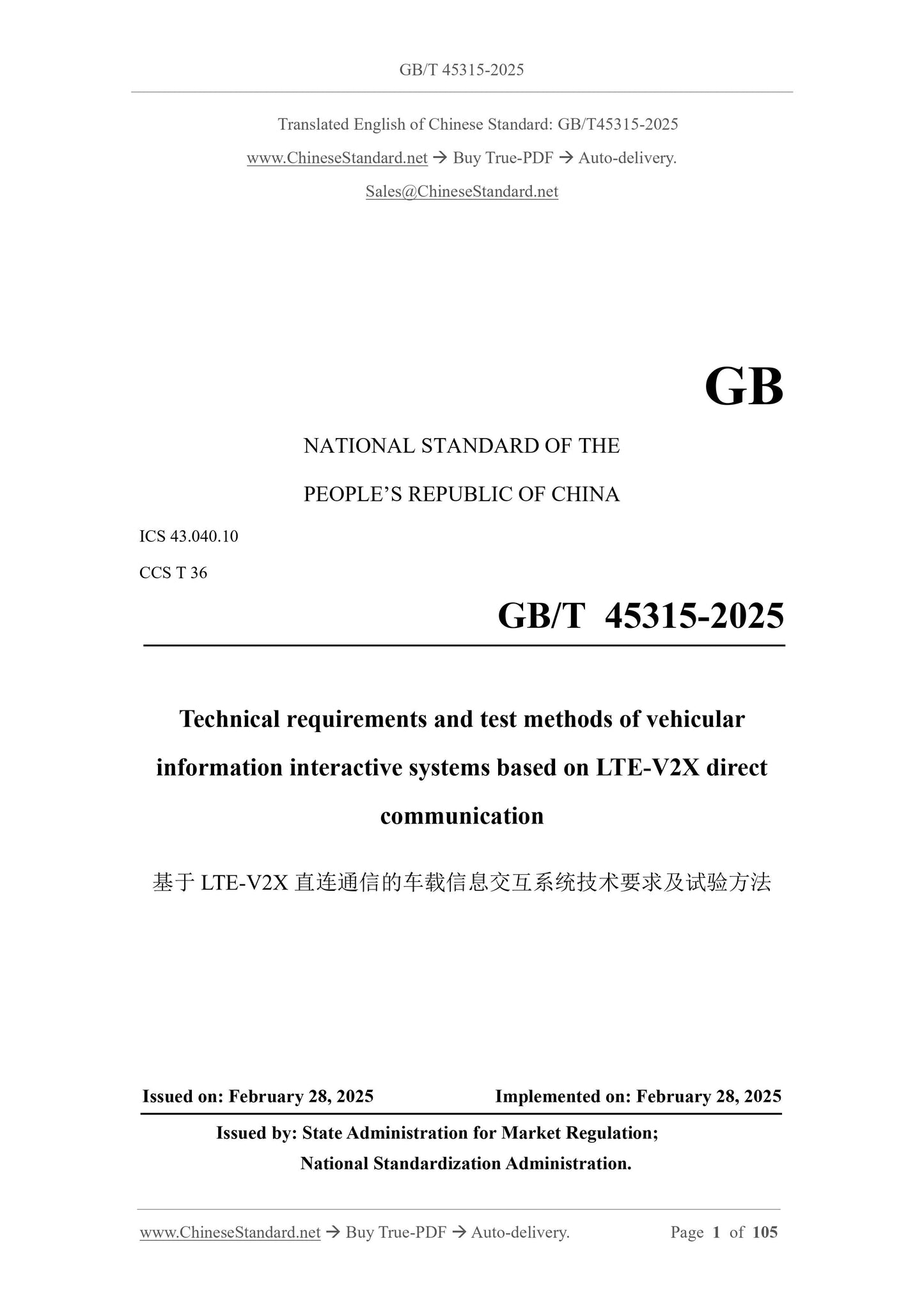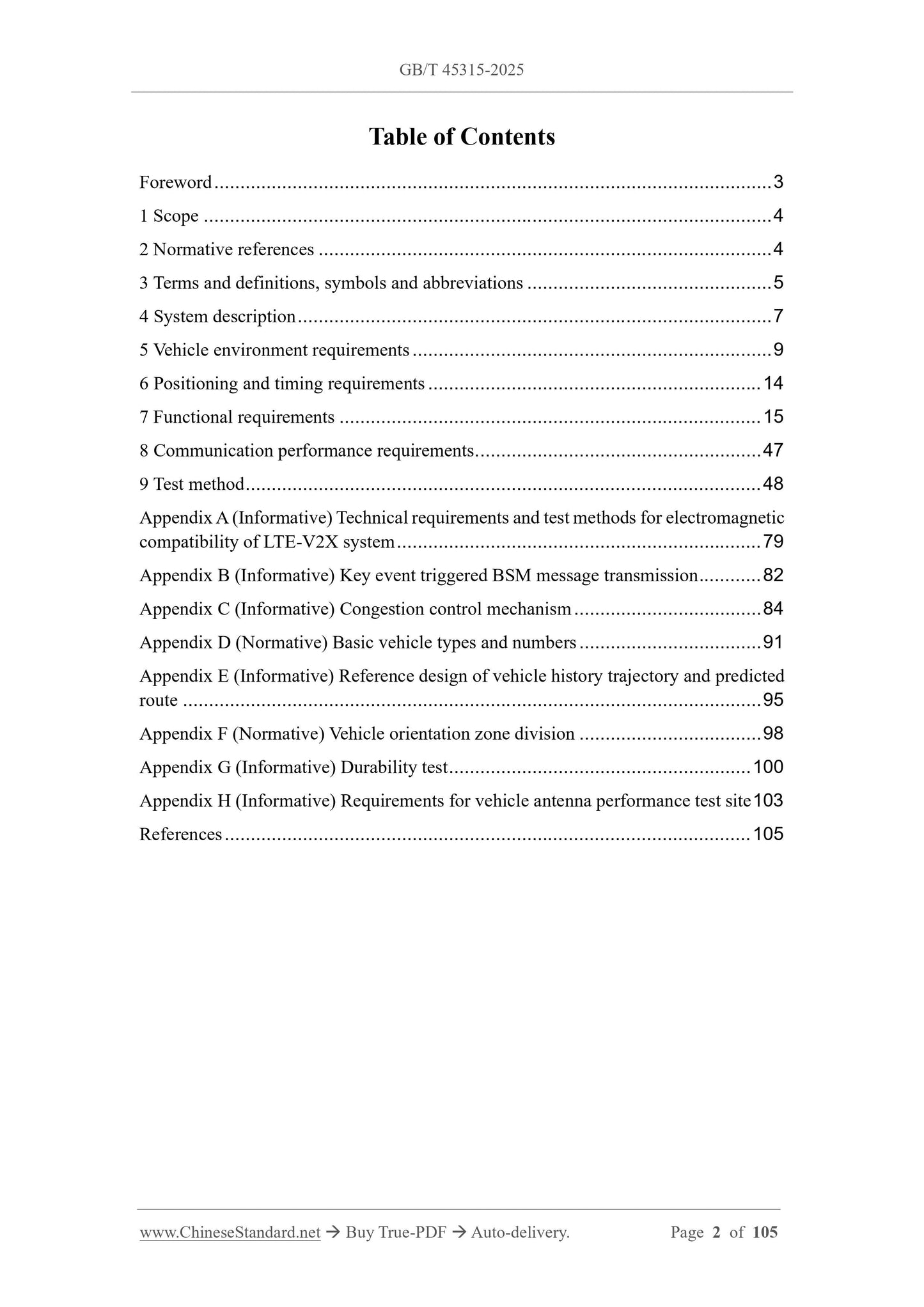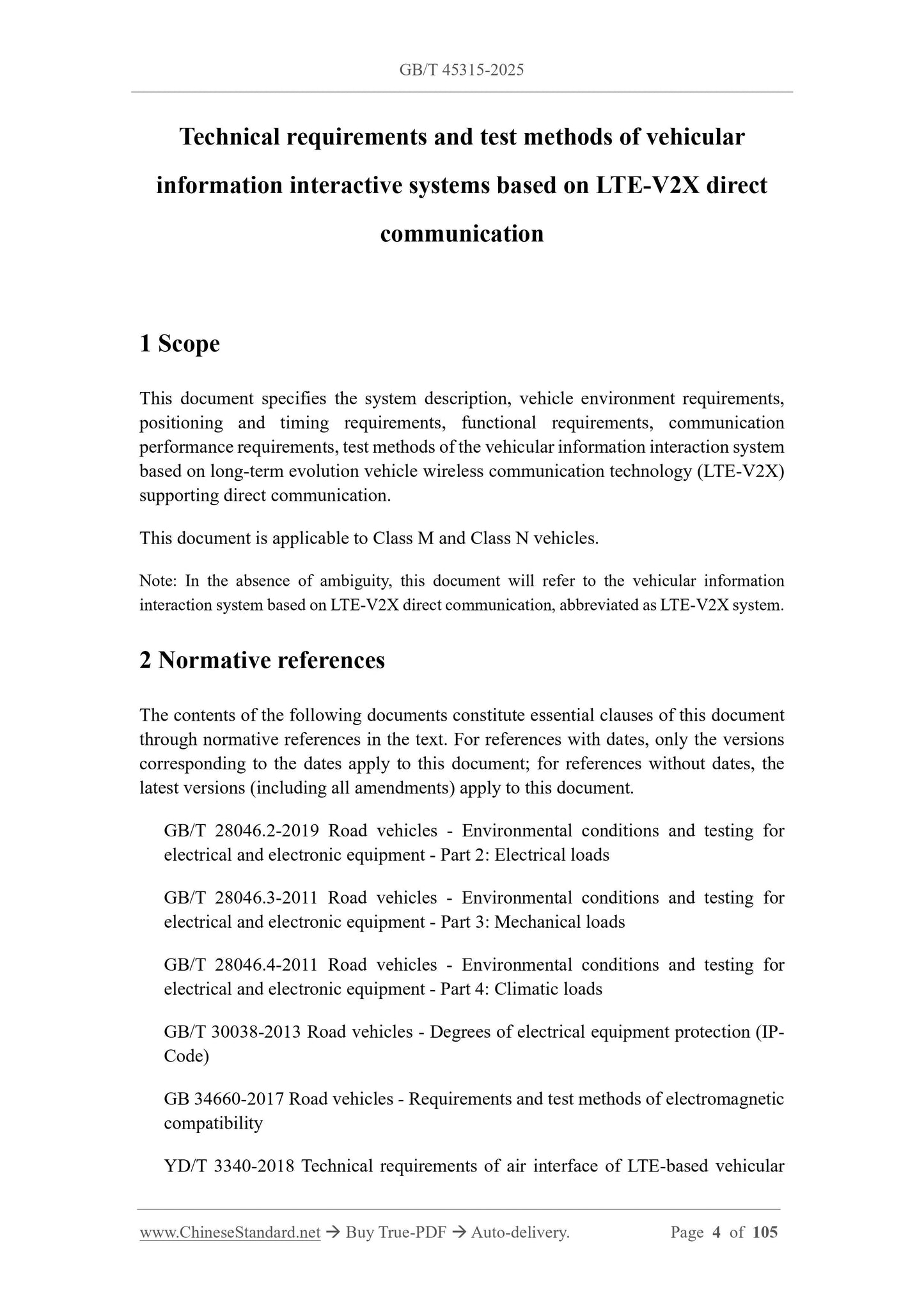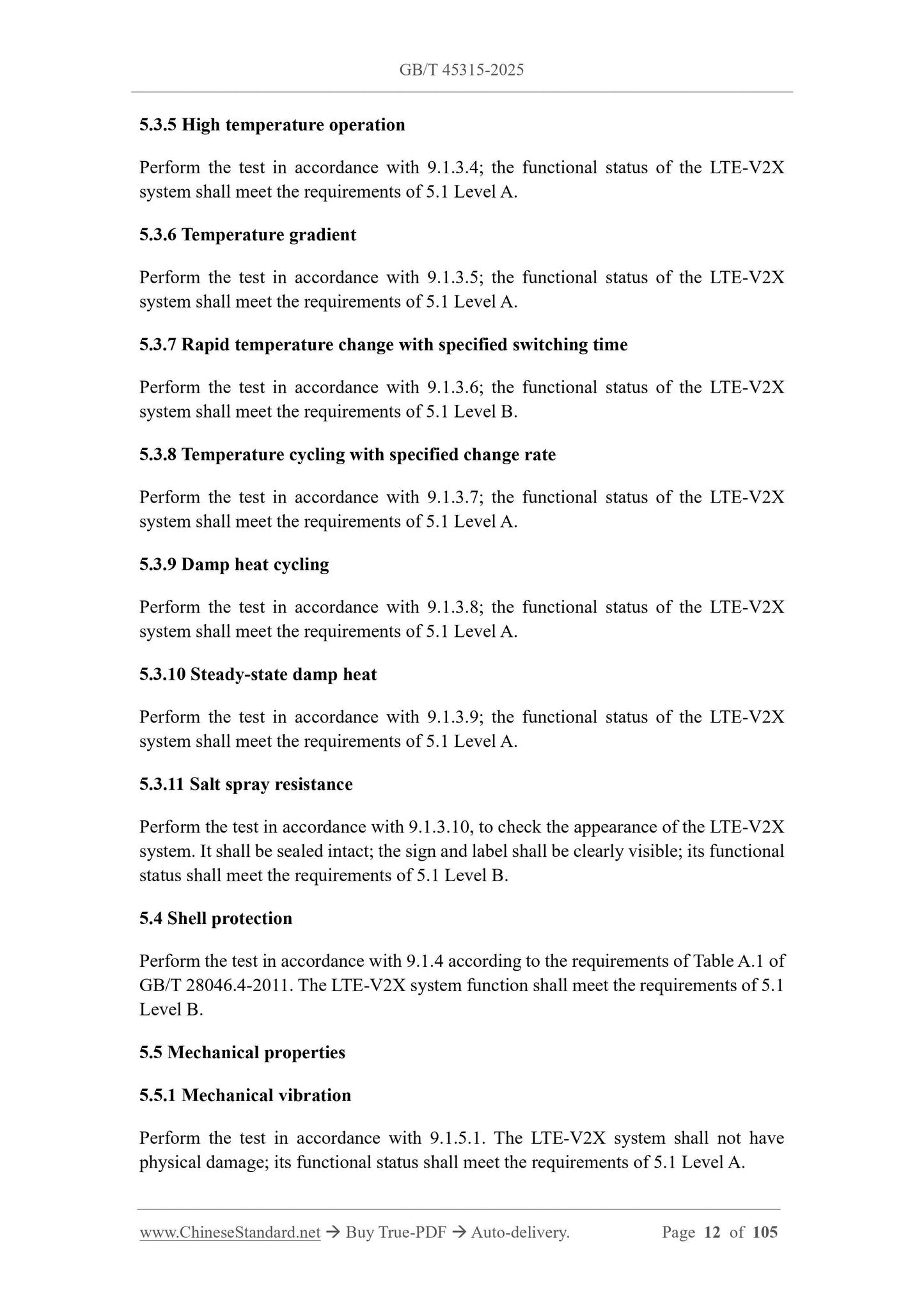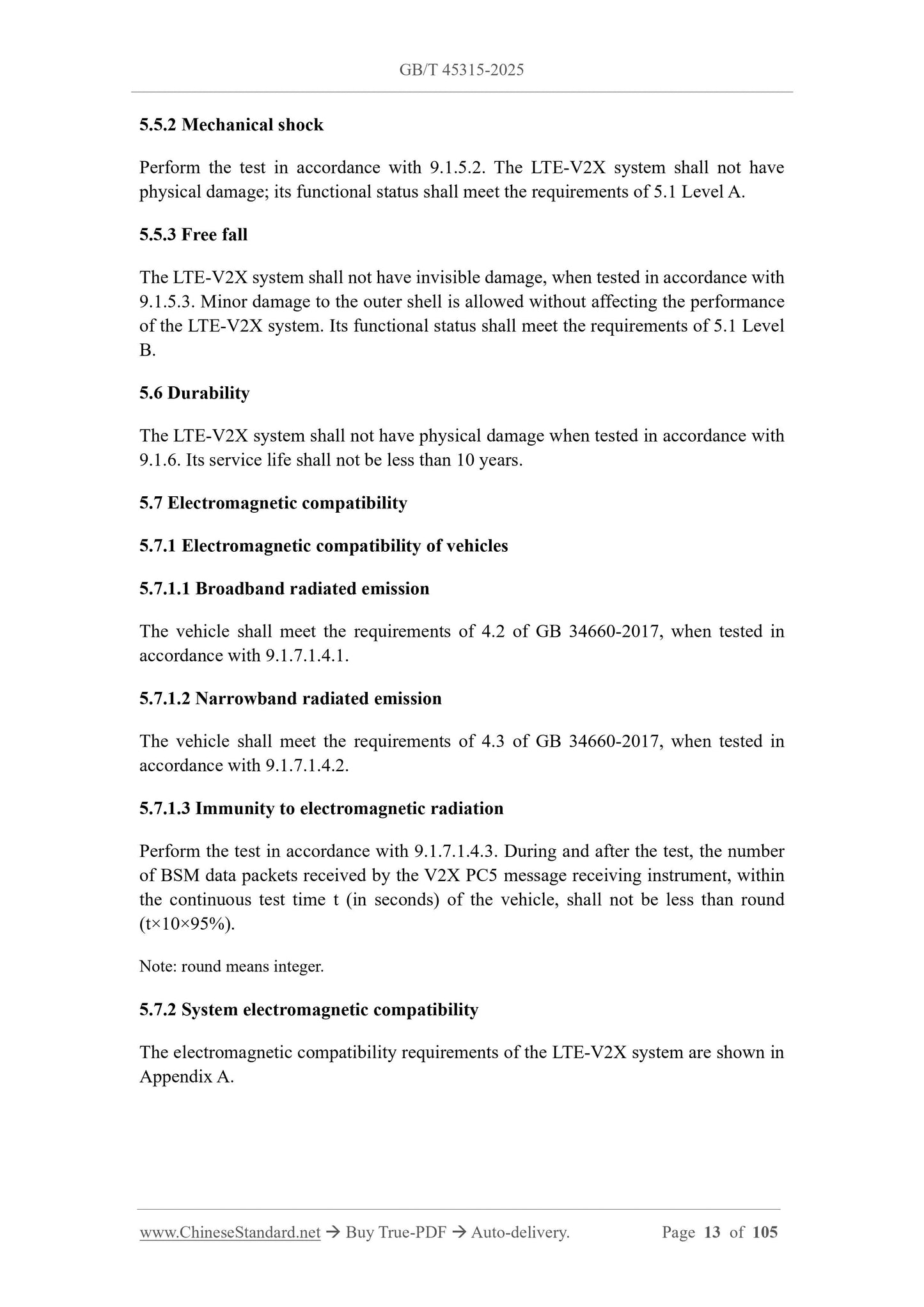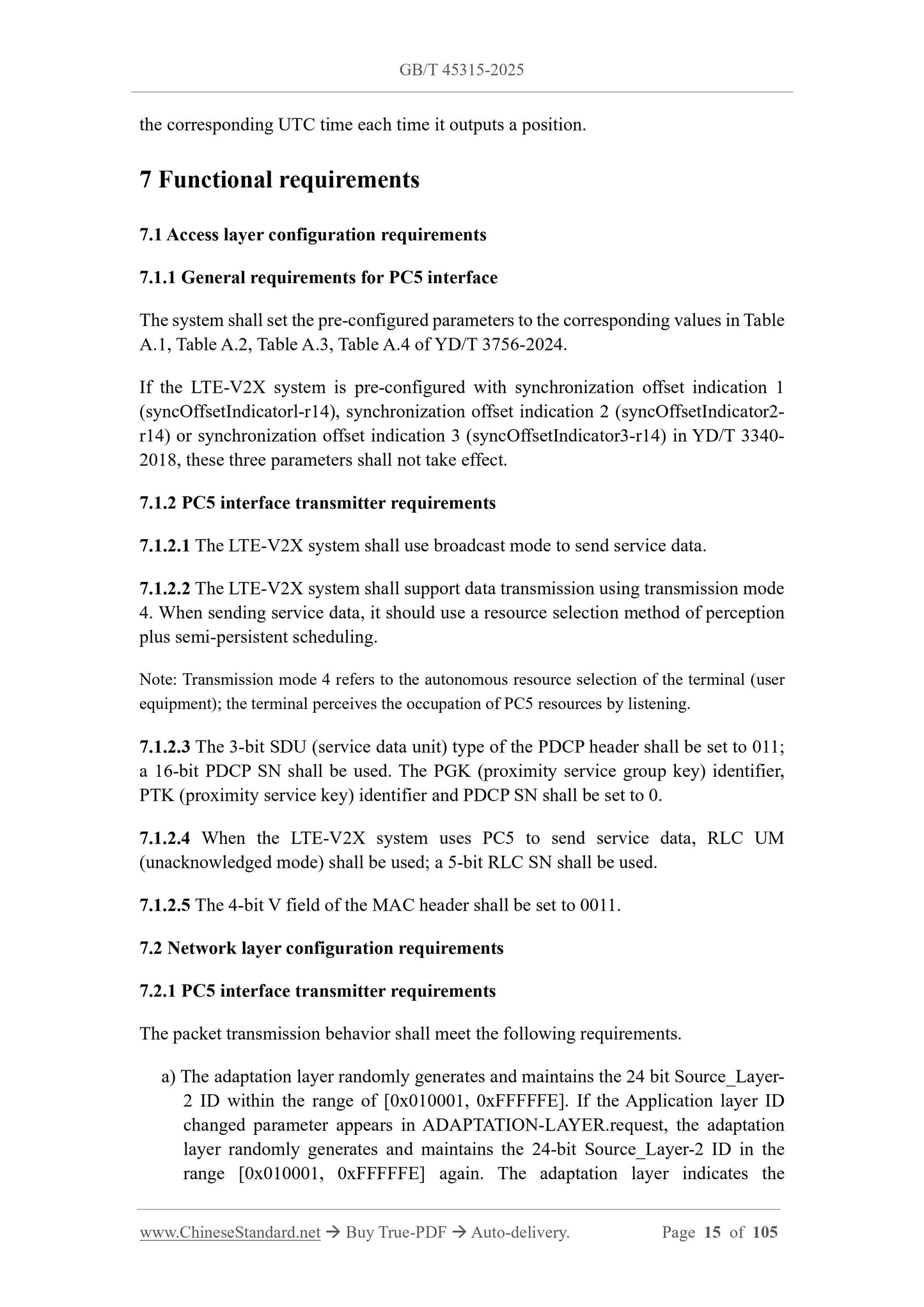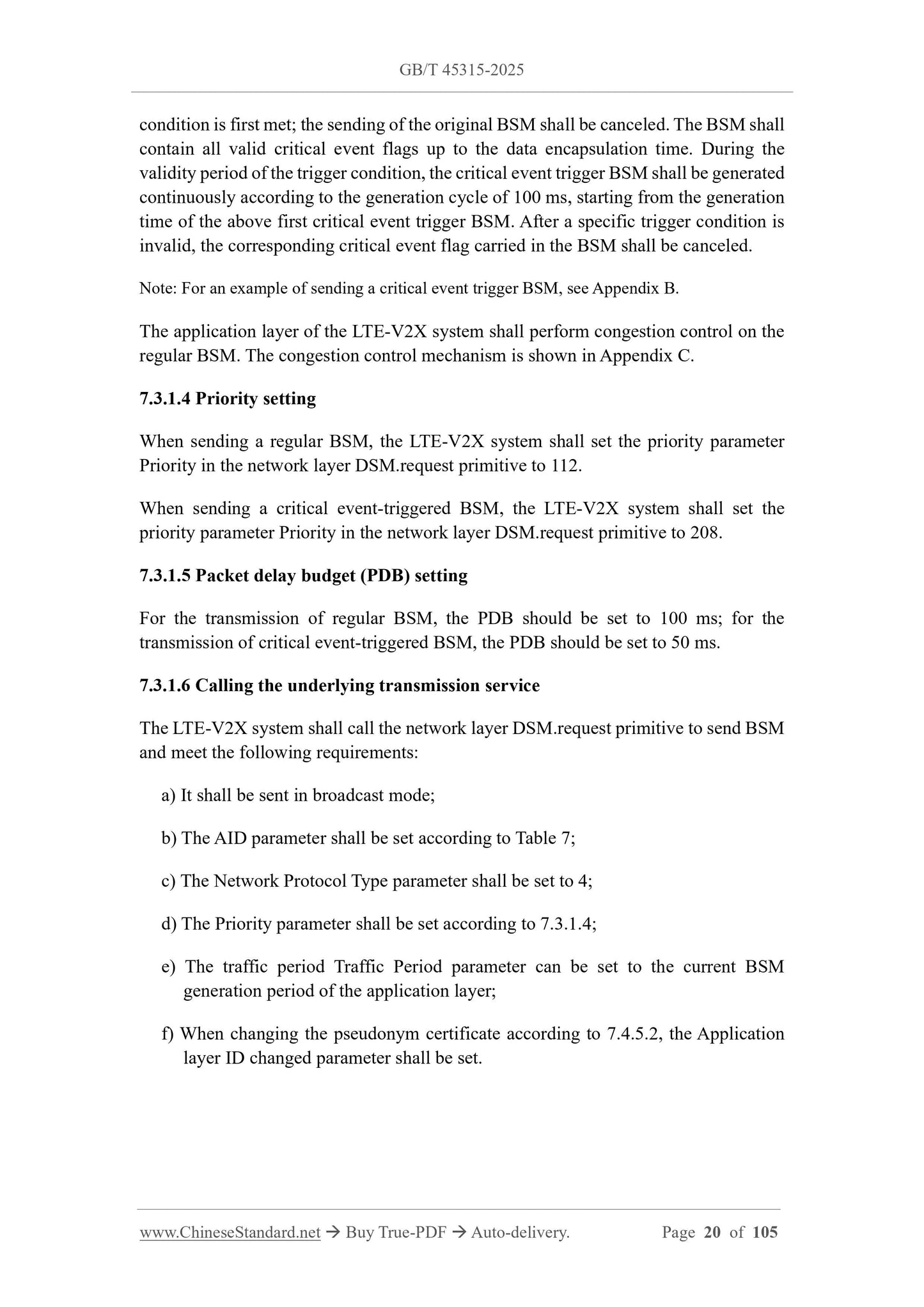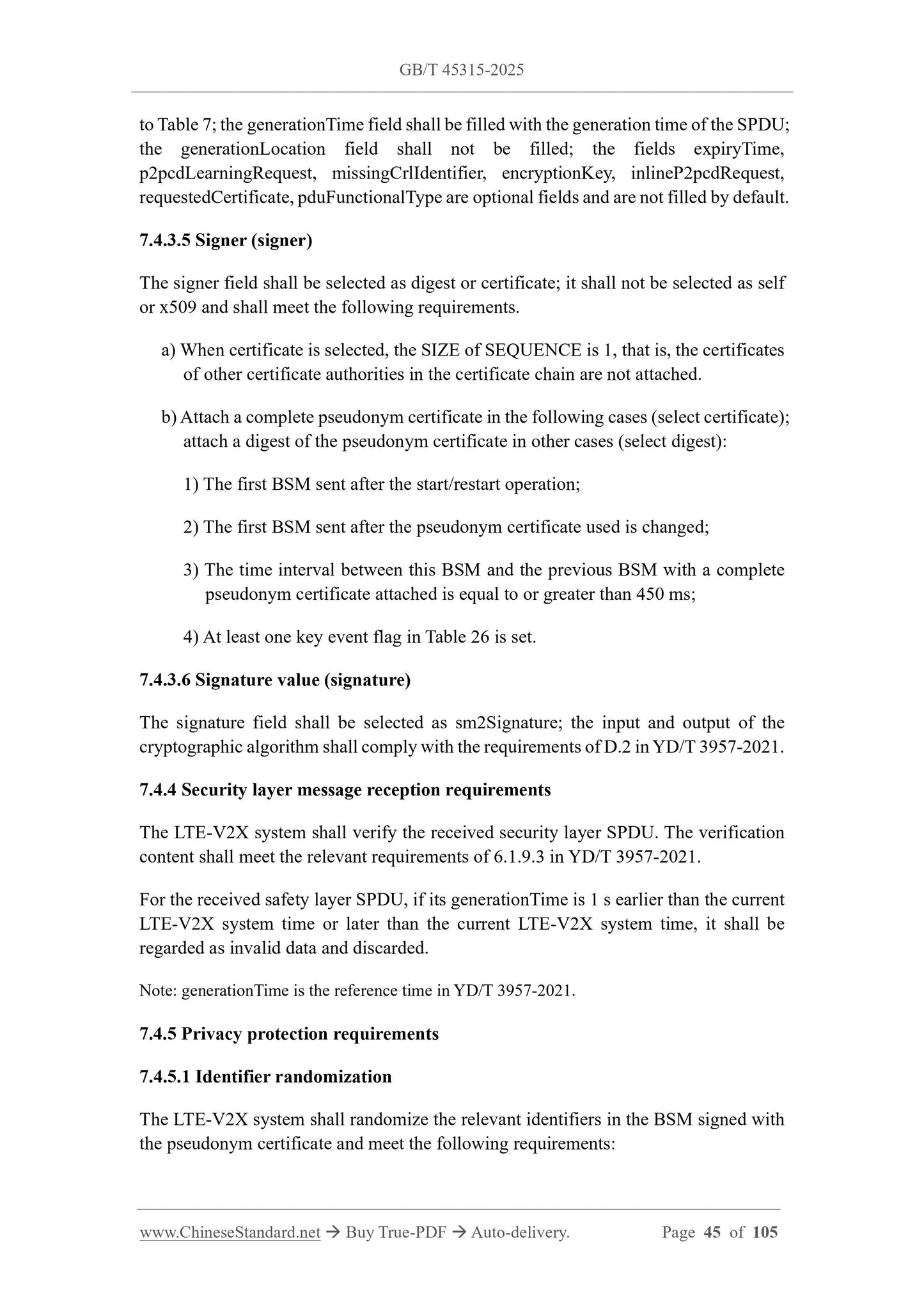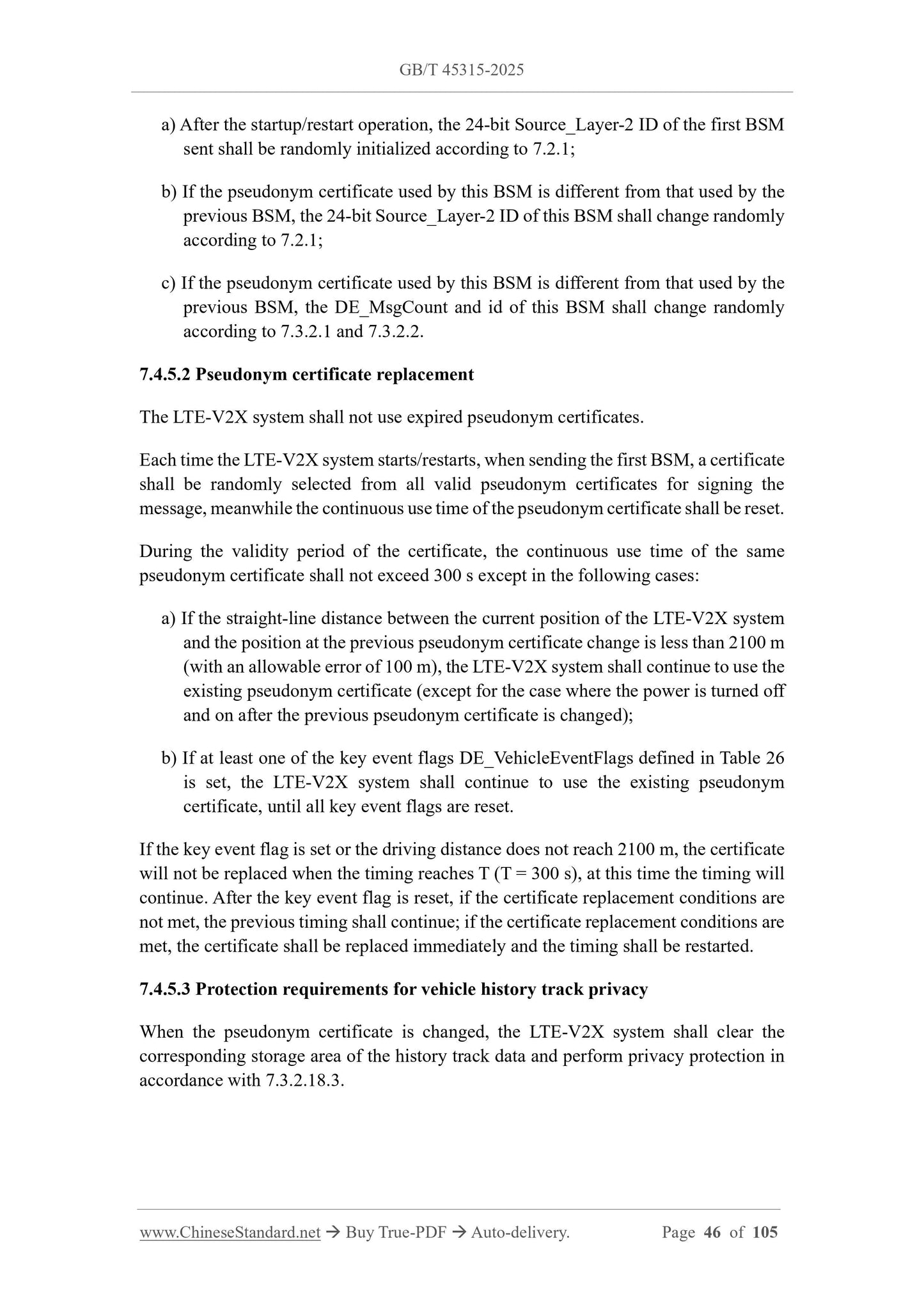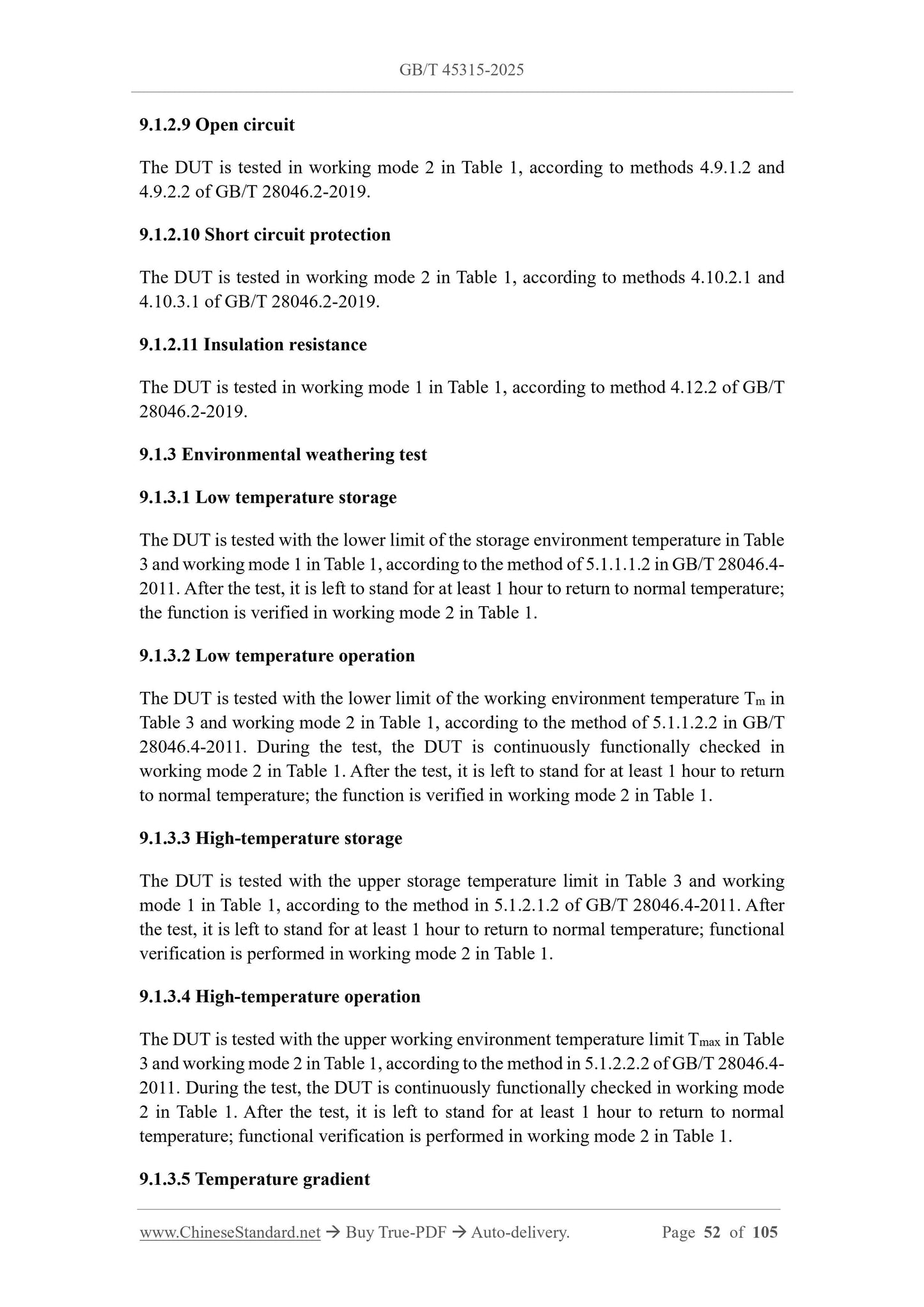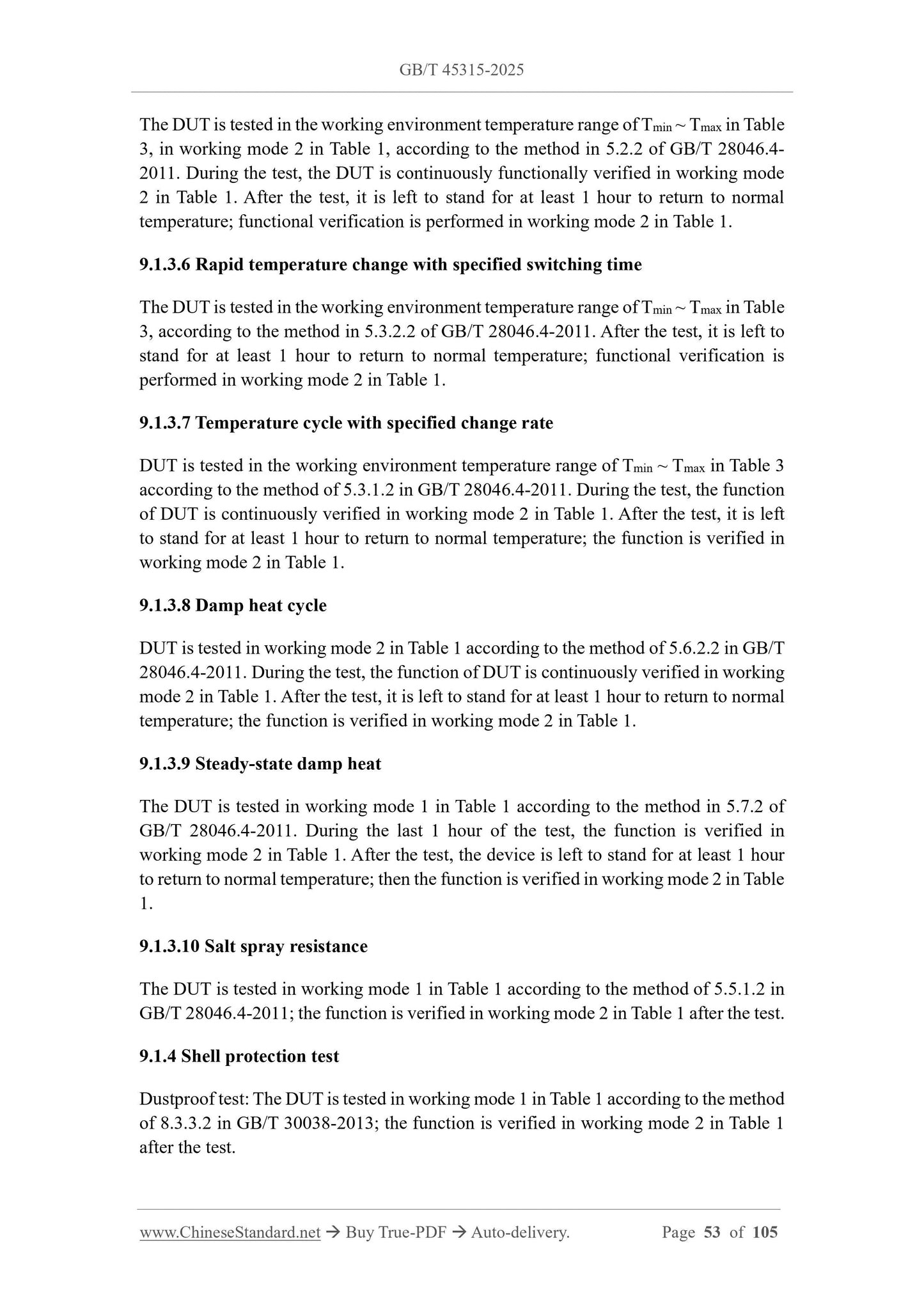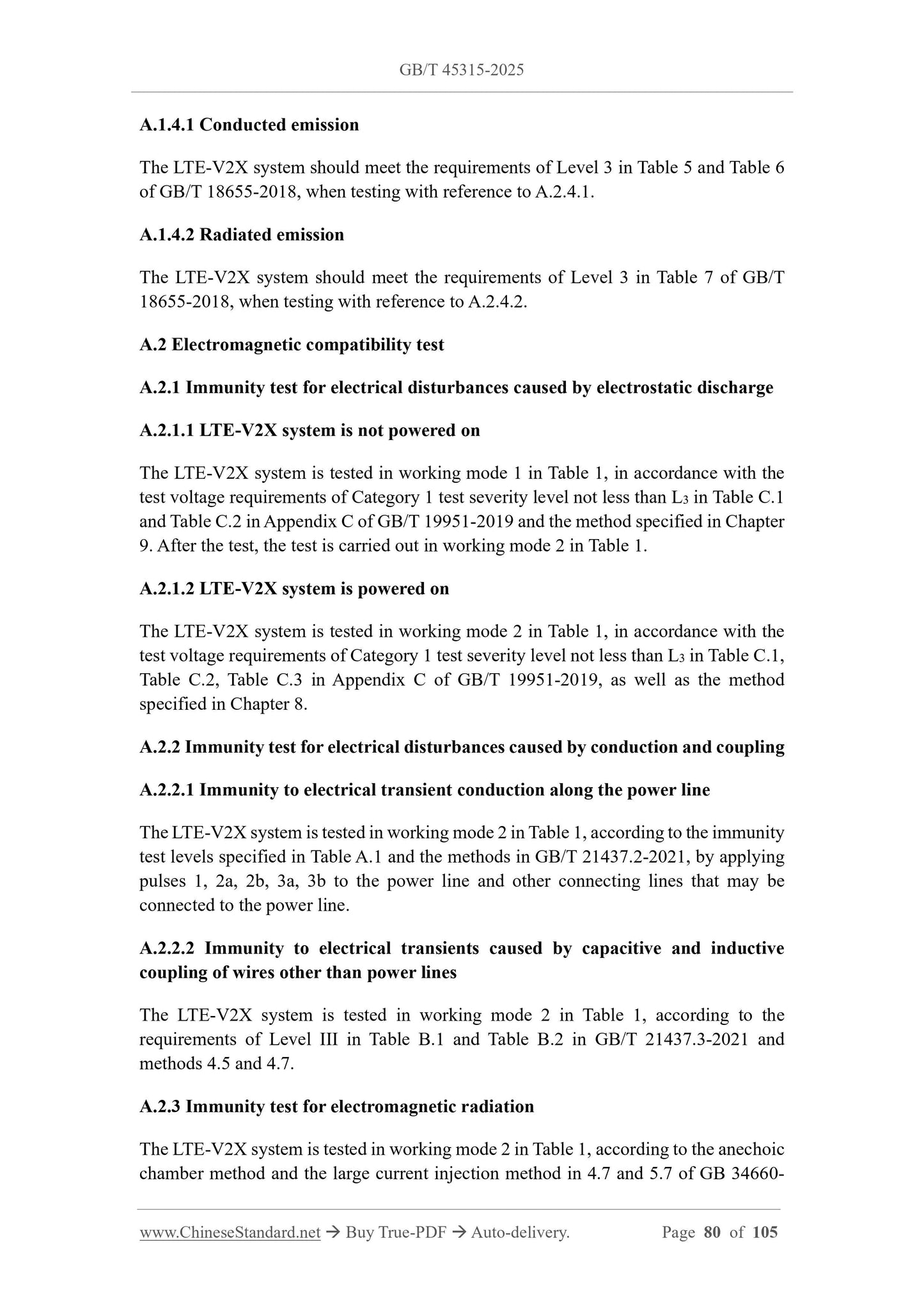1
/
of
12
www.ChineseStandard.us -- Field Test Asia Pte. Ltd.
GB/T 45315-2025 English PDF (GB/T45315-2025)
GB/T 45315-2025 English PDF (GB/T45315-2025)
Regular price
$1,265.00
Regular price
Sale price
$1,265.00
Unit price
/
per
Shipping calculated at checkout.
Couldn't load pickup availability
GB/T 45315-2025: Technical requirements and test methods of vehicular information interactive systems based on LTE-V2X direct communication
Delivery: 9 seconds. Download (and Email) true-PDF + Invoice.Get Quotation: Click GB/T 45315-2025 (Self-service in 1-minute)
Newer / historical versions: GB/T 45315-2025
Preview True-PDF
Scope
This document specifies the system description, vehicle environment requirements,positioning and timing requirements, functional requirements, communication
performance requirements, test methods of the vehicular information interaction system
based on long-term evolution vehicle wireless communication technology (LTE-V2X)
supporting direct communication.
This document is applicable to Class M and Class N vehicles.
Note: In the absence of ambiguity, this document will refer to the vehicular information
interaction system based on LTE-V2X direct communication, abbreviated as LTE-V2X system.
Basic Data
| Standard ID | GB/T 45315-2025 (GB/T45315-2025) |
| Description (Translated English) | Technical requirements and test methods of vehicular information interactive systems based on LTE-V2X direct communication |
| Sector / Industry | National Standard (Recommended) |
| Classification of Chinese Standard | T36 |
| Classification of International Standard | 43.040.10 |
| Word Count Estimation | 82,816 |
| Date of Issue | 2025-02-28 |
| Date of Implementation | 2025-02-28 |
| Issuing agency(ies) | State Administration for Market Regulation, National Standardization Administration |
Share
